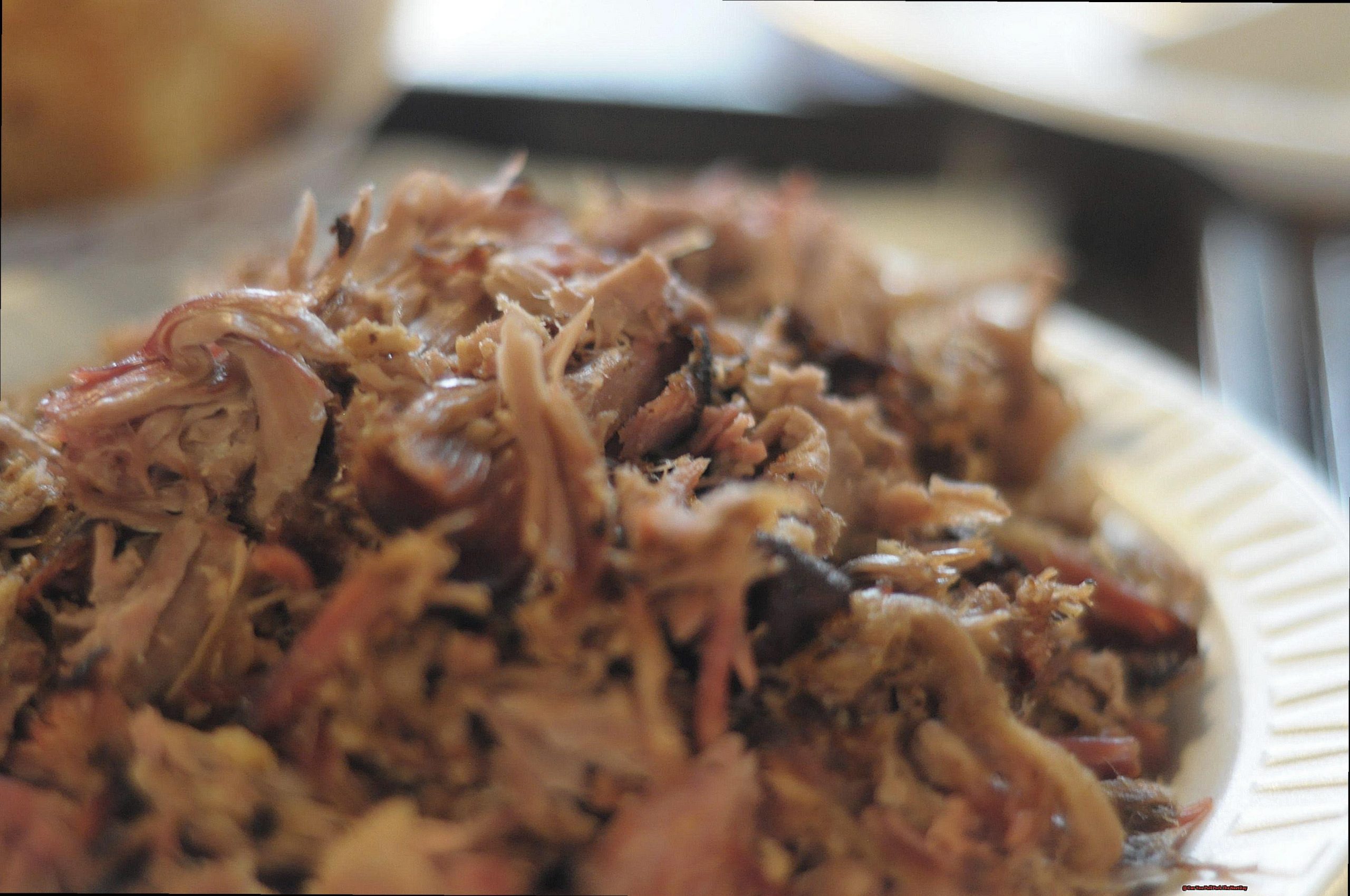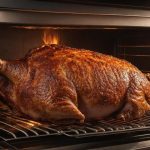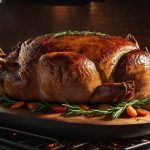Picture this: a piping hot pulled pork sandwich, oozing with savory juices and smothered in tangy BBQ sauce.
Is your mouth watering yet? Pulled pork is undeniably one of the most beloved dishes, but what happens when you have leftovers?
Can you reheat it without sacrificing its mouthwatering flavors? This has been a hotly debated topic among foodies and BBQ enthusiasts for years.
Some say it’s a culinary sin to reheat pulled pork, while others swear by it as a convenient and delicious option for meal prep. In this blog post, we’ll delve into the controversy and uncover the truth about reheating pulled pork.
So grab your favorite BBQ sauce and join us on this flavorful journey.
Contents
- 1 The secret to reheating pulled pork without drying it out
- 2 How to properly store pulled pork
- 3 How much pulled pork per portion?
- 4 Reheating your pulled pork
- 5 Other ways to reheat pulled pork
- 6 Reheating pulled pork with the Sous Vide method
- 7 Can you reheat pulled pork in the microwave?
- 8 Reheating safety
- 9 How many times can you reheat pulled pork?
- 10 What to do with leftover pulled pork?
- 11 No such thing as ‘too much’ pulled pork
- 12 Conclusion
The secret to reheating pulled pork without drying it out
Reheating pulled pork without drying it out can be a daunting task, but fear not, for there are key steps you can follow to keep your succulent meat moist and flavorful. Here are the secrets:
After cooking, store your pulled pork in an airtight container or tightly wrapped in foil. This will help retain moisture and prevent it from becoming dry.
When reheating, you have a variety of options such as the oven, stovetop, crockpot, or grill. This allows you to choose the method that best suits your needs and preferences.
To prevent dryness, add a splash of liquid while reheating. Broth, BBQ sauce, or vinegar are all excellent choices that will keep your meat moist and juicy.
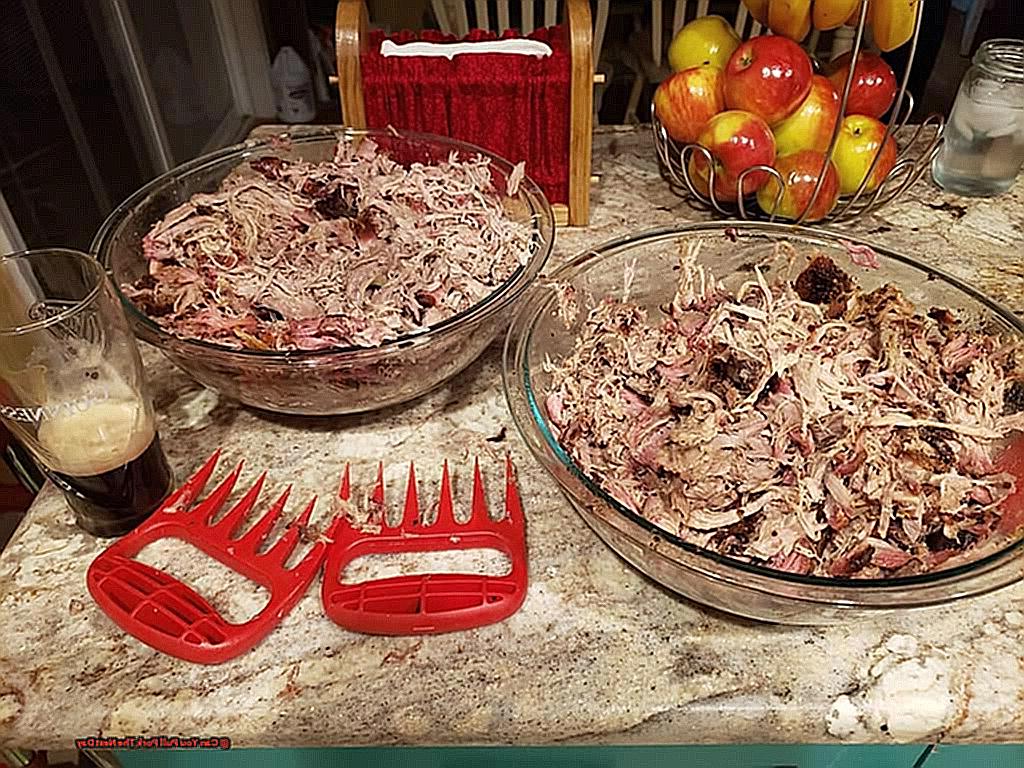
Only reheat the amount you plan on eating immediately. This helps prevent bacterial growth and foodborne illnesses. Additionally, avoid reheating more than once to maintain the quality of your pulled pork.
If your pulled pork has become compact after refrigeration, simply add some moisture such as BBQ sauce or broth and gently toss to achieve the desired texture.
By following these steps, you can ensure that your leftover pulled pork maintains its delectable flavor and texture during the reheating process.
How to properly store pulled pork
It is crucial to properly store pulled pork to maintain its freshness and ensure safe consumption the following day. Here are some top storage methods to keep your pulled pork delicious and free from harm:
Airtight containers or tightly wrapped foil
To prevent air and moisture from penetrating, store your pulled pork in airtight containers or wrap it tightly in foil. This will preserve its texture and prevent it from drying out.
Refrigerate within two hours of cooking
It is essential to refrigerate cooked meats within two hours of removal from heat to prevent bacterial growth and foodborne illnesses.
Use vacuum seal bags
If you have already pulled your pork, the most effective way to store it is in a vacuum seal bag. This will maintain its texture and flavour.
Freeze for future use
Leftover pulled pork can be frozen for up to three months. Be sure to label and date your frozen pulled pork correctly for easy identification.
Thaw overnight in the refrigerator
When ready to use, thaw frozen pulled pork overnight in the refrigerator. This will ensure even and safe thawing without compromising the taste or texture.
Consume within 3-4 days
Refrigerated cooked pork should be consumed within three to four days when stored at 40°F or below.
Keep whole if storing overnight
If you plan on storing your pulled pork overnight, it is best to keep it whole rather than pulling it apart. This will maintain its moisture and prevent it from drying out.
Refrigerate, not at room temperature
It is important to refrigerate pulled pork instead of leaving it at room temperature. This will prevent bacterial growth and ensure its safety for consumption.
By following these storage techniques, you can guarantee that your pulled pork remains fresh and safe for consumption the next day. Remember to only reheat what you plan on eating immediately and only reheat once.
How much pulled pork per portion?
When it comes to serving pulled pork, the recommended amount per person is between 1/3 and 1/2 pound of raw pork. Of course, this can vary based on the event and the appetites of your guests, but it’s always better to have more than not enough. Pulled pork is a versatile dish that can also be frozen for later use, making it a convenient option for any gathering.
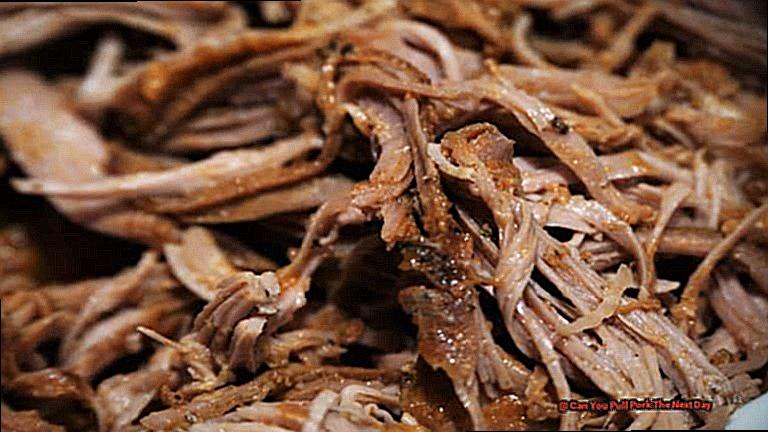
| Event Type | Serving Size | Notes |
| BBQ/Party/Tailgate | 1/3 – 1/2 pound per person | Adjust serving size based on guest appetites and consider having extra for leftovers. |
| Buffet Style Dinner | 1/4 – 1/3 pound per person | This allows guests to try a variety of dishes and have smaller portions. |
| Hungry Crowd or Main Dish | 1/2 – 3/4 pound per person | For those with larger appetites or when pulled pork is the main dish with minimal sides. |
| Side Dish or Sandwiches | 1/8 – 1/4 pound per person | When serving pulled pork as a side dish or in sandwiches alongside other dishes. |
| Pulled Pork Sliders or Appetizers | 2-3 ounces per person (about 6 sliders) | If serving smaller portions or as an appetizer, adjust accordingly. |
When cooking for a large group, it’s important to consider the different appetites and dietary restrictions of your guests. Offering a range of serving sizes can ensure that everyone is satisfied. Additionally, incorporating pulled pork into dishes like tacos, nachos, or mac and cheese can help stretch the amount needed per person. And don’t forget to factor in side dishes and other protein options as well.
It’s always better to err on the side of caution and have extra pulled pork on hand than to run out and leave your guests hungry. With proper storage techniques, pulled pork can also be enjoyed as leftovers or frozen for future use.
Reheating your pulled pork
Reheating your pulled pork can be done in several ways, but the key to preserving its tenderness and flavor is to heat it gradually and carefully. Below are some tips for each method:
- Oven Method: Preheat your oven to 275°F (135°C) and place the pulled pork in a baking dish. To retain moisture, cover the dish with foil or a damp paper towel. Heat for 20-30 minutes until the internal temperature reaches 165°F (74°C).
- Sous Vide Method: This approach involves heating the pork in a vacuum-sealed bag in a water bath. Set the sous vide machine to 135°F (57°C) and cook for an hour. This method is perfect for maintaining the pork’s tenderness.
- Air Fryer Method: Preheat your air fryer to 350°F (175°C) and place the pulled pork in a single layer in the basket. Heat for 5-10 minutes until warmed through and slightly crispy on the outside.
- Stovetop Method: This method works well if you only have a small amount of pulled pork to reheat. Place the pork in a pan with some liquid (such as broth or BBQ sauce) and heat over medium-low heat until warmed through.
Remember to always use a meat thermometer to ensure that the internal temperature reaches 165°F (74°C). Additionally, only reheat the pulled pork once to avoid drying it out. For added flavor, you can also add some sauce or liquid to the meat while reheating.
Proper storage of leftover pulled pork is crucial for successful reheating. Make sure to store it in an airtight container or tightly wrap it with foil before refrigerating. Leftover pulled pork can be kept in the fridge for 3-4 days or frozen for up to 3 months.
Other ways to reheat pulled pork
Other ways to reheat pulled pork include utilizing the sous vide technique, grilling, and microwaving. These methods offer a variety of options for achieving perfectly cooked pulled pork, depending on the resources and equipment you have at your disposal.
Sous Vide Method:
The sous vide method is a popular choice for reheating pulled pork due to its ability to retain the meat’s moisture and consistency. To employ this method, you’ll need a vacuum-sealed plastic bag, a large pot of boiling water, and a thermometer. Simply place the pulled pork into the bag, seal it, and submerge it in the boiling water for approximately 45 minutes. For safe reheating, ensure the internal temperature of the pork reaches 145-150 degrees Fahrenheit.
Grilling:
Grilling is another excellent option for reheating pulled pork. To do so, you’ll need defrosted pulled pork, foil, barbecue sauce, and water. Begin by wrapping the pulled pork in foil with a generous amount of barbecue sauce and a splash of water. Next, place the foil packet on the cooler side of a two-zone grill and cook for 10-15 minutes over medium-high heat. This method ensures even heating while maintaining the meat’s moisture.
Microwaving:
Microwaving is the fastest method for reheating pulled pork; however, precautions must be taken to avoid drying out the meat. It is crucial to add extra sauce or marinade to the pork before microwaving it to preserve its moisture and flavor. Microwave the pulled pork in 30-second intervals until it reaches an internal temperature of 145-150 degrees Fahrenheit.
Each of these alternative methods offers a unique approach to reheating pulled pork while ensuring its safety and flavor. Whichever method you choose, always remember to store the pork correctly and use a meat thermometer for best results.
Reheating pulled pork with the Sous Vide method
The Sous Vide method has become a popular and convenient cooking technique, involving the use of a vacuum-sealed bag and precise temperature control in a water bath. This method is often utilized for reheating leftovers, such as pulled pork. But how does the Sous Vide method impact the texture and taste of reheated pulled pork the following day?
Reheating pulled pork with the Sous Vide method is ideal because it offers precise temperature control, resulting in evenly heated meat that maintains its moisture. By sealing the meat in a bag, the juices are trapped, preventing them from evaporating and leaving the pork dry.
Moreover, since the pork is cooked in its own juices, it results in a more intense and concentrated flavor. This is especially beneficial for reheating leftover pulled pork, as it may have lost some of its initial flavor during the first cooking process.
The Sous Vide method also allows for better management of the texture of reheated pulled pork. By adjusting the temperature of the water bath, you can achieve a tender or firmer texture according to your preference.
Furthermore, this approach minimizes the risk of bacterial growth as the meat is cooked at a controlled temperature for an extended period. This guarantees that the pulled pork is both safe to consume and maintains its quality.
To reheat pulled pork using the Sous Vide method, simply place the vacuum-sealed bag of meat into a pot of water and cook at 165°F (74°C) for 45 minutes to an hour. Once done, remove from the water bath and let it rest for 5-10 minutes before opening and serving.

In conclusion, utilizing the Sous Vide method to reheat pulled pork produces succulent, flavorful meat that preserves its moisture and texture.
Can you reheat pulled pork in the microwave?
For optimal taste and safety, reheating pulled pork in the microwave is recommended at a rate of 2-3 minutes per pound of meat.
It is important to ensure the internal temperature of the meat reaches 165 degrees Fahrenheit before consuming, as this guarantees both taste and safety.
The sous vide method is an excellent option for reheating pulled pork, providing evenly heated and flavorful meat.
Reheating time may vary based on the weight and amount of pulled pork, so it is important to monitor the microwave and check the internal temperature regularly.
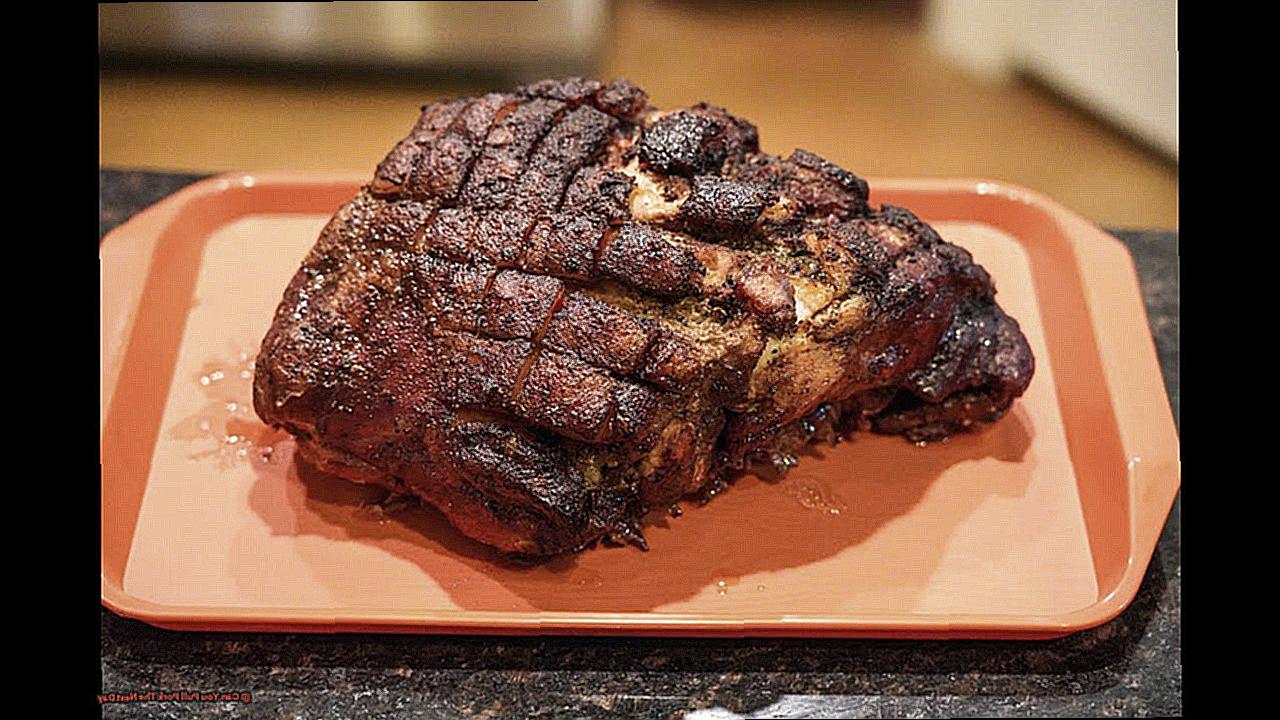
| Weight of Pulled Pork | Recommended Heating Time in Microwave | Internal Temperature to Check |
| 1 pound | 2-3 minutes | 165 degrees Fahrenheit |
| 2 pounds | 4-6 minutes | 165 degrees Fahrenheit |
| 3 pounds | 6-9 minutes | 165 degrees Fahrenheit |
| 4 pounds | 8-12 minutes | 165 degrees Fahrenheit |
Reheating pulled pork in the microwave requires following proper steps and adhering to recommended time and temperature for optimal taste and safety. Using a microwave-safe dish and adding some juice or sauce to the meat can help prevent drying out.
Checking the internal temperature before consuming is crucial, as this guarantees both taste and safety.
It is recommended to take caution when reheating pulled pork in the microwave, as improper reheating can result in dry and overcooked meat. To avoid this, it is important to follow recommended steps and pay attention to details such as using a microwave-safe dish and checking the internal temperature.
Reheating safety
When it comes to reheating safety of pulled pork, it is crucial to follow proper food safety guidelines to avoid any potential risks. Here are some best practices to ensure the safe reheating of pulled pork:
- Use a food thermometer: The only way to accurately determine if pulled pork has been reheated to a safe temperature is by using a food thermometer. The USDA recommends heating leftovers to an internal temperature of 165°F (74°C) to eliminate harmful bacteria.
- Reheat in small batches: It is best to reheat pulled pork in small batches as it ensures even heating and prevents the meat from drying out.
- Add liquid: To keep the pulled pork moist while reheating, it is essential to have some moisture present. Adding a shallow layer of liquid such as broth or water to the pan or slow cooker can help retain the meat’s moisture.
- Use the sous vide method: For evenly heated and flavorful meat, try the sous vide method. This involves placing the pulled pork in a vacuum-sealed bag and heating it in a water bath at 165°F (74°C) for 30-45 minutes per one-inch thickness.
- Avoid overcooking: Overcooking pulled pork can result in dry and tough meat. To prevent this, be mindful of the heating time and temperature, and use a food thermometer to check for doneness.
In conclusion, when reheating pulled pork, following food safety guidelines and using proper techniques are crucial for ensuring thoroughly heated and safe-to-eat meat.
How many times can you reheat pulled pork?
The answer is yes, but it is not recommended. It is best to reheat the pork only once and store the leftovers in single-serving portions. Reheating pork multiple times increases the risk of bacterial growth, which can cause food poisoning. However, if proper storage and reheating methods are followed, the pork can be safely reheated and enjoyed again.
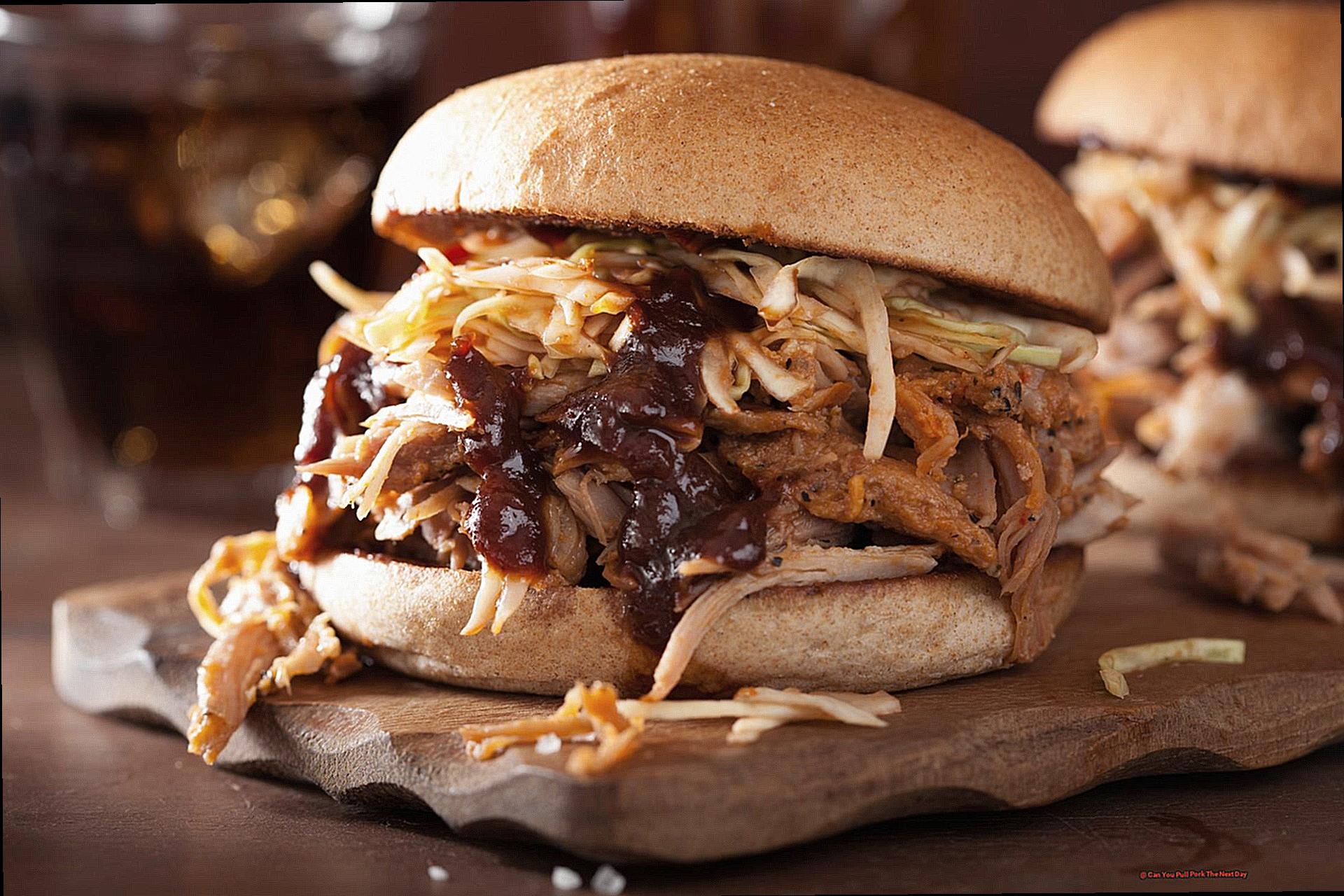
| Storage Method | Recommended Time in Fridge | Recommended Time in Freezer |
| Vacuum Sealed | 4 days | 2-3 months |
| Leftovers in Original Container | 3-4 days | 2-3 months |
| Reheated and Rapidly Cooled | 1 day | N/A |
After cooking, leftover pulled pork should be immediately chilled to prevent bacterial growth. One effective method is to place the pork in one piece and vacuum seal it in individual portions. Vacuum sealing preserves food and saves space in the freezer. The recommended serving size for adults is 5oz, but smaller portions can be frozen for children or those with smaller appetites.
When reheating pulled pork, it is crucial to ensure that it reaches a safe internal temperature of 165°F (74°C). This can be achieved by placing a sealed bag of pulled pork in boiling water for 5 minutes. Other methods for reheating include using an oven, grill, crockpot, or sous vide.
To decrease the risk of bacterial growth, it is advised to only reheat once and store leftover pork in single-serving portions. If you plan on reheating multiple times, make sure to rapidly cool the meat after reheating. This can be done by placing it in an ice bath or in the fridge.
For a delicious loaded nachos recipe using reheated pulled pork, consider the following:
Ingredients:
- 1 bag of tortilla chips
- 2 cups of reheated pulled pork
- 1 cup of shredded cheese
- 1/2 cup of diced tomatoes
- 1/4 cup of sliced green onions
- 1/4 cup of sliced black olives
- 1/4 cup of sour cream
- 1 jalapeno, sliced (optional)
Instructions:
- Preheat your oven to 375°F (190°C).
- Spread out a layer of tortilla chips on a baking sheet.
- Top with reheated pulled pork and shredded cheese.
- Bake for 10-15 minutes, until the cheese is melted and bubbly.
What to do with leftover pulled pork?
According to the latest food safety guidelines, leftover pulled pork must be consumed within 3-4 days if it has been properly refrigerated below 40 degrees Fahrenheit. However, the ambient temperature is also a critical factor in determining the safety of your pulled pork – if the temperature is higher than 90 degrees, then the food can only be left out for an hour before it needs to be refrigerated. It is crucial to store and reheat pulled pork correctly to prevent any potential cases of foodborne illnesses.
To ensure that your leftover pulled pork maintains its freshness and quality, it is recommended to freeze it. When stored in high-quality freezer bags with minimal air, pulled pork can last for several months in the freezer. However, after two or three months, you may start to notice a decline in its quality due to freezer burn.
When reheating pulled pork, make sure to pay attention to any changes in smell, appearance, or texture. These could be signs of spoiled meat, and it is best to discard it if you have any doubts. But don’t let that discourage you from enjoying your leftover pulled pork. Be creative and incorporate it into various dishes like mac and cheese, nachos, tacos, chili, or sandwiches.
No such thing as ‘too much’ pulled pork
When it comes to BBQ, leftovers are always welcomed, especially when it comes to pulled pork. Whether you’re hosting a large gathering or just love having meals for days, proper storage and reheating methods are crucial in order to maintain the flavor and texture of pulled pork.
To ensure the best results, it is recommended to vacuum seal individual portions of pulled pork for storing leftovers. Not only does this help preserve the taste and texture, but it also reduces food waste by allowing you to thaw only what you need.
When reheating pulled pork, the key is to retain as much moisture as possible. One effective method is reheating in boiling water for 5 minutes, which helps keep the juices intact and results in succulent pulled pork.
Other options for reheating include using an oven, grill, crock pot, or sous vide machine. Microwaving is also an option, but it is advisable to transfer the pork into a microwave-safe container to avoid any harmful chemicals from plastic packaging.
It is important to take precautions against bacterial growth when storing and reheating pulled pork. This can be done by chilling the pork immediately after cooking and limiting multiple reheatings.
Leftover pulled pork can also add flavor and versatility to other recipes, such as loaded nachos or BBQ pulled pork grilled cheese.
In summary, there is no limit to how much pulled pork you can have if stored and reheated properly. By following these tips and methods, you can enjoy delicious pulled pork for days without compromising on taste or texture.
Conclusion
In conclusion, the age-old question of whether or not pulled pork can be reheated has been put to rest – and the answer is a resounding yes.
With proper storage techniques and various reheating methods at your disposal, you can easily enjoy the delicious flavors of leftover pulled pork without sacrificing its tender texture. Remember to use a meat thermometer and only reheat once for food safety.
So don’t let those leftovers go to waste, reheat them for a convenient and mouthwatering meal.

